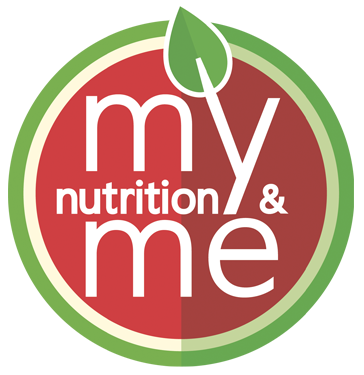RAW MILK CONSUMPTION; YAY OR NAY….?
By Karolin Saweres, MS, RDN, LD
The federal government, through the U.S. Food and Drug Administration (FDA), does not permit the sale of raw (unpasteurized milk) milk for human consumption, and advises states not to permit the sale of raw milk1. This has been established to ensure that no major milk-borne disease outbreaks occur. This is an issue especially for high-risk population including children, individuals with weakened immune system, pregnant women, and the elderly.
There is overwhelming scientific evidence that raw milk can transmit human pathogens. Pathogenic organisms including Salmonella, Escherichia coli 0157/H7, Campylobacter, Listeria, Yersinia, Brucella, and Mycobacterium can contaminate raw milk. In fact, many pathogens that can contaminate milk are shed in the feces of healthy cows. They then contaminate milk through cross contamination from the skin of the udder, the milking equipment, or the hands of the people milking the cows, and they can be sustained through processing. Furthermore, pathogenic organisms can be shed in the milk from an udder that is clinically free of signs of disease2.
Illness can occur from the same brand and source of raw milk that people had been drinking for a long time without becoming ill3. Each ill person’s symptoms can differ depending on the type of germ, the amount of contamination, and the person’s immune defenses3.
Pasteurization was invented during a time when millions of people became sick and died of tuberculosis, scarlet fever, typhoid fever, and other diseases that were transmitted through raw milk3. Pasteurization has prevented millions of people from becoming ill3. Routine pasteurization of milk began in the United States in the 1920s and became widespread by 1950 as a means to reduce contamination and reduce human illnesses3.
Prior to widespread pasteurization, milk products caused 25% of all food-related disease outbreaks in the United States. Currently, they are implicated in less than 1% of food-borne outbreaks. The Centers for Disease Control and Prevention (CDC) describes pasteurization as “one of the public health triumphs of the 20th century.” In its federal regulatory role of promoting and protecting public health through supervision of food safety, the Food and Drug Administration prohibited the distribution of raw milk across state lines for direct sale to consumers in 19872.
Milk can be sold only in the state where it was purchased and cannot be sold across state lines or internationally. The sale of products made from raw milk is also not permitted. Even though the federal government allows only Grade A pasteurized milk to be sold to consumers, 31 states allow for consumers to purchase raw milk directly1. In many states, raw milk can be only purchased at the farm, at farmers’ markets or through a "cow-share" program, where consumers combine resources to purchase a dairy cow1. In 12 states, however, consumers can purchase raw milk at retail stores1. In the remaining 19 states, the sale of raw milk to consumers is prohibited. Raw milk, however, can be purchased for animal consumption1. Raw milk for animal consumption is regulated under commercial feed licensing laws. This policy would include cow share programs in states where, even though there is a prohibition on the sale of raw milk, state regulatory agencies have made a policy decision not to shut down cow share programs they know of that comply with state guidelines. State policy sometimes does conflict with and override state statutes, administrative rules or other written guidelines in the regulation of milk and milk products1. The state milk law summaries are based on research of the state statutory and administrative codes and conversations with farmers and state dairy officials1.
The raw milk for human consumption regulation or policy can affect so many different sectors. This affects the food environment and economy. It affects different individuals, families, communities, and states.
The known health risks and uniform expert recommendations have failed to reverse, halt, or even prevent the expansion of the sale and consumption of raw milk in the United States2. The CDC reports that the rate of diseases associated with raw milk is 2.2 times higher in states that allow the legal sale of raw milk than in states that do not allow this practice3. The CDC collects data on foodborne disease outbreaks voluntarily reported by state, local, or territorial health departments3. Reported outbreaks represent a very small part of the total picture. Most illnesses are not a part of recognized outbreak, and for every outbreak and every illness reported, many others occur3.
Pasteurized milk has occasionally caused outbreaks. Mishandling of the product, sealing, unsanitary processes in the plant, and inappropriate handling of temperatures have caused this.
The public is trying to “get back to nature” by choosing foods that are minimally processed. Some individuals views raw milk as minimally processed but do not understand the risk it contains. Individuals supporting raw milk consumption claim raw milk tastes better, is more nutritious, a good source of probiotics has a role in preventing autism and relieves allergy symptoms. However, there’s no scientific evidence to support these claims. The public also needs to understand that some processes are needed to make food safe to eat. This also includes cooking meat, fish or poultry for human consumption. Most nutrients of raw milk are available in pasteurized milk. Vitamin C is reduced by pasteurization. However, raw milk is not a major source of vitamin C for humans.
Raw milk consumption should be carefully considered especially for the high risk populations.
References:
1. Farquhar, Doug, and Gretchenn DuBois. State Milk Laws, www.ncsl.org/research/agriculture-and-rural-development/raw-milk-2012.aspx.
2. “Compulsory Pasteurization of All Non-Human-Derived Animal Milk Products Intended for Human Consumption.” AMERICAN PUBLIC HEALTH ASSOCIATION, www.apha.org/policies-and-advocacy/public-health-policy-statements/policy-database/2016/12/21/pasteurization-of-animal-milk.
3. “Raw Milk Questions and Answers.” Centers for Disease Control and Prevention, Centers for Disease Control and Prevention, 15 June 2017, www.cdc.gov/foodsafety/rawmilk/raw-milk-questions-and-answers.html.
















